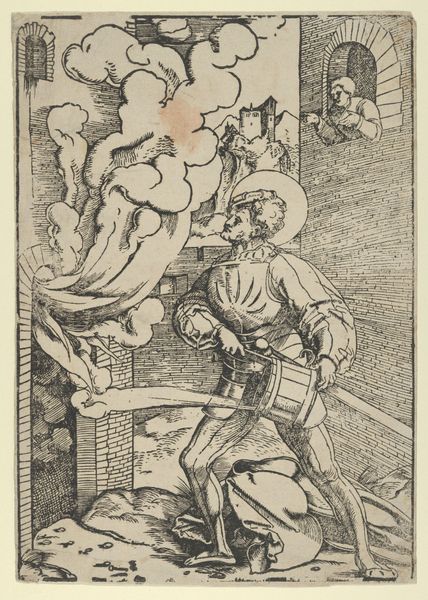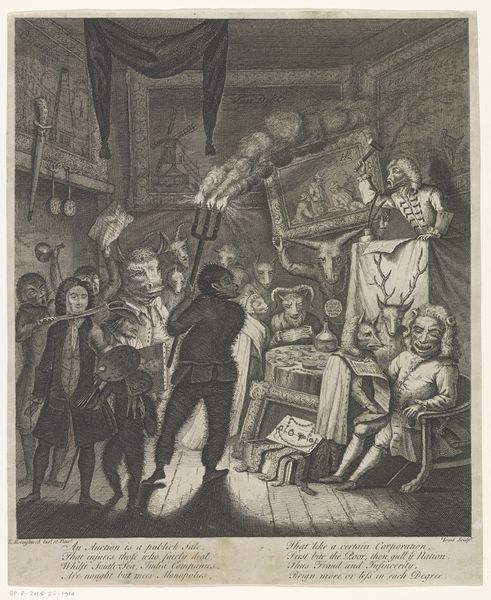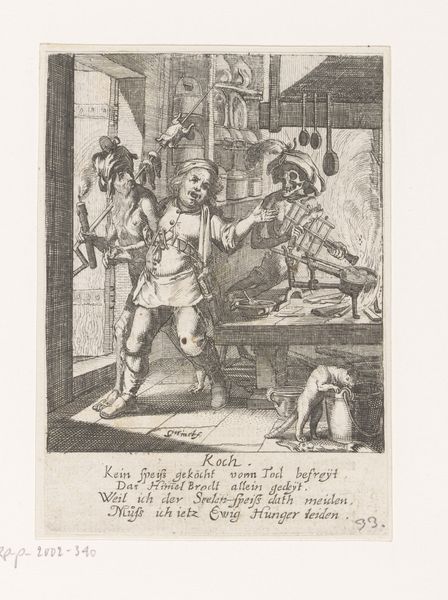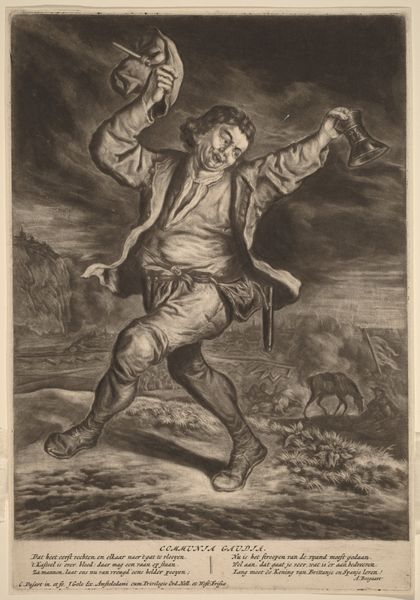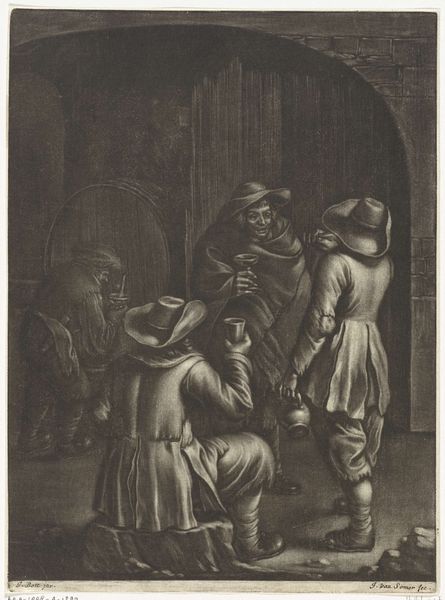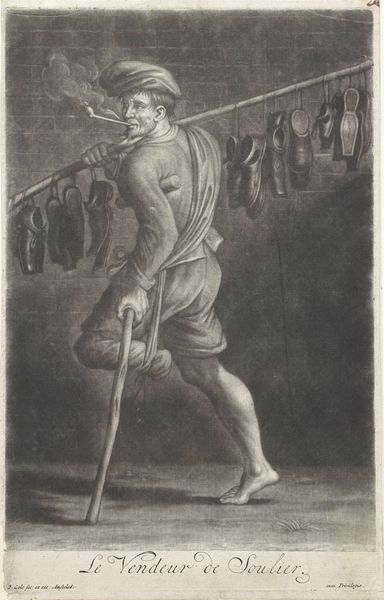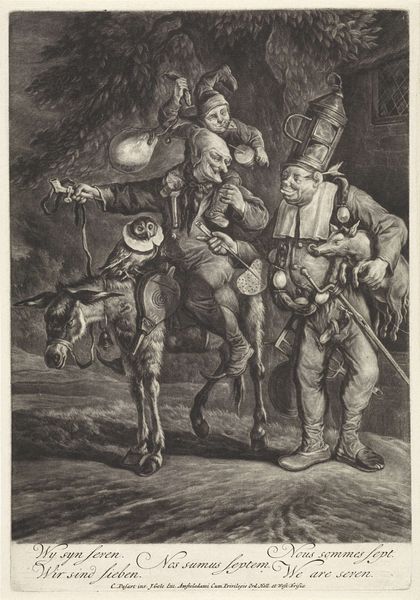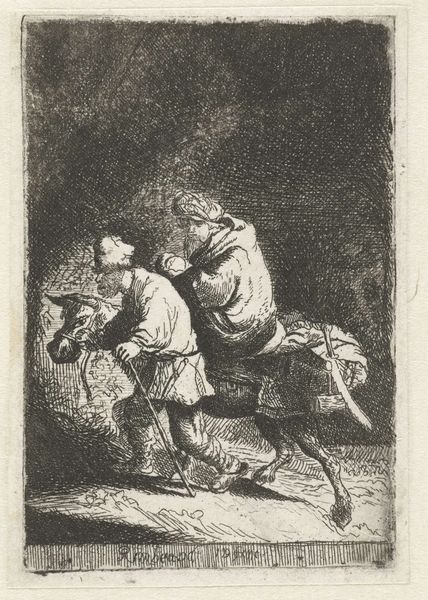
etching, engraving
#
dutch-golden-age
#
etching
#
caricature
#
old engraving style
#
traditional media
#
genre-painting
#
engraving
Dimensions: height 253 mm, width 180 mm
Copyright: Rijks Museum: Open Domain
Cornelis Dusart’s etching, made around 1700, presents a boisterous scene of a corn cutter advertising his services, but notice the strings of what appear to be extracted corns hanging above him like trophies. This display of collected ailments, strung together like scalps, echoes the ritualistic displays found in various cultures. Think of the votive offerings left at temples, or the macabre arrangements of bones in a charnel house. These are remnants, tokens of suffering overcome, transformed into objects of power and memory. The image, in this way, taps into a primal urge to confront and contain the unpleasant aspects of our existence. The corn cutter, almost a shaman figure, embodies a symbolic cleansing, removing the physical manifestations of pain. This transformation is not just a medical procedure, but a ritual, offering relief from suffering, thus engaging our subconscious recognition of pain and healing. The cyclical, non-linear progression of this symbol has resurfaced in different eras. Dusart's etching freezes a fleeting moment, laden with these echoes and transformations, which continue to resonate through the ages.
Comments
No comments
Be the first to comment and join the conversation on the ultimate creative platform.



